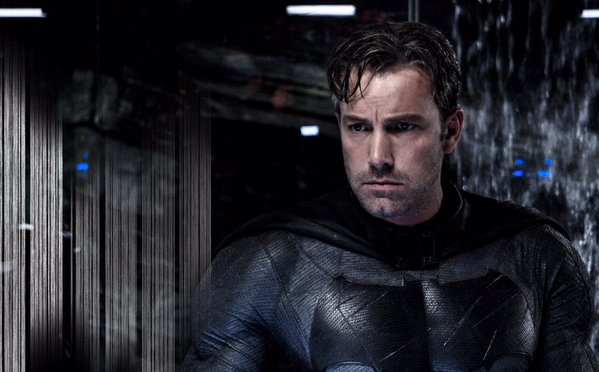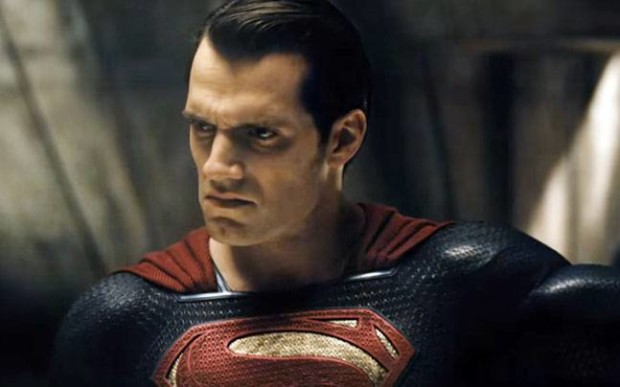Genre: Superhero
Premise: Pretty sure the title gives it away.
About: Batman vs. Superman came out this weekend, and while the critics didn’t like it, it pulled in 170 million dollars. That doesn’t beat out some recent big earners (like Star Wars), but it’s a very strong opening for a superhero film. The film has been in development for 20 years. It took Marvel’s success with The Avengers to finally push WB over the edge to commit to the film.
Writers: Chris Terrio and David S. Goyer (Batman created by Bob Kane and Bill Finger) (Superman created by Jerry Siegel and Joe Shuster)
Details: 2 hours and 30 minutes long
One of the commonalities I’ve noticed in the reviews of this film is how dazed the reviewers are. You know in war movies how the soldiers are on the battlefield and a bomb blows up near one and we hear that ringing noise and the soldier kinda looks around, bullets whizzing by his head, wondering what the hell just happened? That’s how I imagined most reviewers looking after they left their showing of Batman vs. Superman.
Count me amongst that group.
The best way I can describe this movie is – imagine Warner Brothers receiving five separate screenplays, one each for Batman, Superman, Lex Luthor, Wonder Woman, and Lois Lane, and then a studio head came in and said, “What if we mixed all these together?” And another studio head said, “Yeah, and what if we started shooting it in a month?”
And so some poor writer was tasked with cramming all these individual stories into a single nonsensical monstrosity that was unleashed upon an unsuspecting public who just wanted to see a cool superhero film.
I don’t even know if I should try and summarize the plot, since only a teensy bit of it makes sense, but to the best of my abilities, here’s what I think goes down. Batman is angry that Superman accidentally killed all those people in his city battle with Zod in the previous movie. So he becomes obsessed with killing Superman.
Superman, on the other hand, thinks BATMAN is the irresponsible killer. This is based on how Batman ‘brands’ the villains he catches, which is supposed to be a ‘death sentence’ to those villains once they go to prison.
Meanwhile, Lex Luthor doesn’t like Superman either, and finds some kryptonite in one of the ships Zod brought to earth. When Batman learns about this kryptonite batch, he wants a few scoops, cause that way he’ll have a fighting chance in his cage match against Superman.
The big battle finally happens (spoiler), but as you already know after watching many of these So-and-So vs. So-and-So movies, nobody technically wins. The two end up becoming BFFs just in time to face another threat – that being some crazy-ass villain named “Doomsday” who Lex Luthor created. Enter other superheroes like Wonder Woman who decide to help, and the real battle in Batman vs. Superman begins.
Three years ago, when this movie was announced, I wrote an article titled, “Is Batman vs. Superman The Single Hardest Screenplay to Write In History?” – Not to toot my own horn, but after re-reading that article, it’s scary just how accurate it was. Everything I predicted happened.
The main thing I knew would be trouble was how are you going to believably set up that Batman and Superman would want to fight. Of the two motivations, Batman’s is more convincing – that Superman killed all those people. But come on. There was that sort of important extenuating circumstance. As in the alien who could’ve killed everyone on earth if Superman didn’t stop him? Hasn’t Batman ever heard of collateral damage?
But Superman’s motivation – that was a head-scratcher. Batman was branding the bad guys he captured which meant they’d be killed in prison? First of all, they’re bad guys, so who cares. Second, it didn’t even make sense. If you were a bad guy with a Batman brand on your shoulder, I’d think that’d make you more of a prison celebrity than a target.
At first glance, this might not seem like a big deal. Who cares why they’re fighting? As long as they fight! But see, you’re wrong. Whether it’s the seasoned Hollywood reader or the twice-a-year moviegoer – when you overtly manufacture plot points in a story, the audience knows something is off. They feel the manipulation on a subconscious level. Which is the opposite of what movies are supposed to do. The best movies make you forget that you’re watching a movie. Anything you do to break that suspension of disbelief is a film-killer.
What confuses me is that they spent an entire extra year on “getting this film right.” That was a HUGE risk by Warner Brothers. To forego all that money in order to work on the script and make this the best movie it could be. Now that I’ve seen the film, I’m struggling to figure out where all that extra time was used? Was it so Snyder could bump the number of slow-motion shots in his film up from 30 to 60?
There were just a lot of sloppy or weird things about this film. I’ll give you three examples.
There’s a scene where Batman learns that Lex Luthor is shipping kryptonite from one location to another location. So he says, I’m going to get that shipment, and one scene later, he’s in his Batcar chasing after the shipment. It’s supposed to be one of the featured action set-pieces in the film, yet something about it feels empty, almost like by the time we catch up with what’s going on and actually care, it’s over.
There’s a reason for this. The setup was too fast. We only JUST HEARD about this shipment a scene ago, and therefore weren’t prepared when Batman decided to go after it the very next scene. The thing with action set pieces (and really any scene) is that they work best when they’re set up properly.
A proper setup and payoff requires two things: Time and frequency. Let’s say that Batman had heard about this shipment five scenes ago. Now we have five entire scenes to build up the importance of that shipment, to create anticipation in the audience. In addition to that, you want to FREQUENTLY mention the problem. If the filmmakers show Batman trying to figure out the logistical problems involved in obtaining this kryptonite, the audience is subliminally being reminded of the importance of this plan. NOW when the scene arrives, it’ll actually carry some weight.
To understand this better, look at the movie Taken. I know, I know, a lot of people hate Taken. But I want you to imagine, for a second, that Liam Neeson’s daughter is taken in one scene and then in the very next scene Liam Neesons bursts into the bad guy’s hideout and gets her back. How satisfying would that scene be? Not very, right? Because there was very little time between the setup and the payoff, and absolutely no frequency. So if you’re ever struggling with a big set-piece, the problem may be that you didn’t set it up properly.
We’ll now move from the technical to the bizarre. In the middle of Batman vs. Superman, Batman goes to some desert hideout where, for whatever reason, the bug-flying aliens from Star Wars: Attack of the Clones make an appearance. Who were these bug-flying peeps? Why were there all of a sudden bug-people in Batman vs. Superman? No idea! But I think this was some sort of dream sequence.
And therein lies a bigger problem. Every screenwriter worth their salt knows that you don’t write dream sequences. Dream sequences are meant to be left in film school. Outside of comedies, they are an indicator of the amateurs of the amateurs. You simply don’t use them. But the TRUE amateur move is to place major plot points inside of your dream sequences (“Lois Lane is the key” here in Batman vs. Superman). It’s lazy, it’s sloppy, and just plain lame.
Remember The Matrix 2? The whole thing was driven by this lame dream sequence plot point that Trinity was going to die. Same thing with Revenge of the Sith. Anakin’s motivations were driven by some lame dream sequence where he imagined that Padme was going to die. Are either of those films known for their deftly executed screenplays? No. And it’s because if you’re making a mistake that blatant, you’re usually making a lot more mistakes along with it.
This doesn’t even get into the fact that there’s no reason you should need a dream sequence in a superhero film!!! Dream sequences are there to add funky supernatural weird shit that you wouldn’t otherwise be able to fit into your main plot. But with a superhero movie, you have fucking superheroes!!! You already have the weird, the strange, the macabre. Why would you need to create a dream sequence? The whole movie is a dream sequence.
Finally, I want to bring up the scene that should’ve been one of the best scenes in the movie, but fell short for the very reason the entire movie fell short – because they overcomplicated it. The scene occurs when Batman and Superman meet each other as their alter egos (Clark Kent and Bruce Wayne) at a public gathering.
What we have on display here is one of the most powerful devices in screenwriting – dramatic irony. To refresh everyone’s memory, dramatic irony is when we know something the character does not, usually that they are in danger. So if Jill is heading into her house and we already know that the killer is inside waiting, that’s dramatic irony.
The thing with the Clark-Bruce meeting though is that instead of only knowing what one character doesn’t, we know what two characters don’t. We know that Clark Kent is actually talking to Batman and that Bruce Wayne is actually talking to Superman. This “double” version of dramatic irony makes things a little more complicated and it’s up to the audience to decide if they like this better than your traditional one-sided dramatically ironic situation.
But where things really get weird is that both characters approach the conversation like they DO KNOW who the other secretly is. You see this in their accusatory subtextual verbal sparring. This begs the question: Do these guys know who the other is? Am I missing something? Or is this just the actors misplaying the scene? The point being: even in the simplest slam dunk scenes in the movie, the writers and director found a way to make it more complicated than it should’ve been.
I could honestly talk about this movie all day. I don’t even think it was a bad movie so much as it was a sloppy one. And Chris Terrio is a great writer. He’s got a script up in my Top 25 right now. It’s a reminder that screenwriters on these mega-pics are thrown into a meat-grinder. Whether what comes out is a soggy Big Mac that’s been sitting under a heat-lamp for three hours or a fresh-off-the-grill Double Double from In-and-Out, is often out of their control. So it sucks when we, indeed, get that Big Mac. Maybe once they split these DC movies off into singular adventures, the writing will get better, and we’ll start getting meals worthy of our appetite.
[ ] What the hell did I just watch?
[x] wasn’t for me
[ ] worth the price of admission
[ ] impressive
[ ] genius
What I learned: When a subplot isn’t working, DROP IT. When a character isn’t working, DROP THEM. There’s no faster way to decimate a script’s pace than to keep a subplot that isn’t working. Every time you cut to that subplot, you are essentially putting your movie on pause. Excising Lois Lane’s pointless investigation into a bullet that framed Superman could’ve shaved 20 minutes off this film. Oftentimes, writers believe that just because they’ve spent a lot of time on a character/subplot that they have to keep it/them in. No no no. A thousand times no. If it’s not working, chop it out. I guarantee that you won’t even remember that it was there in a month.




